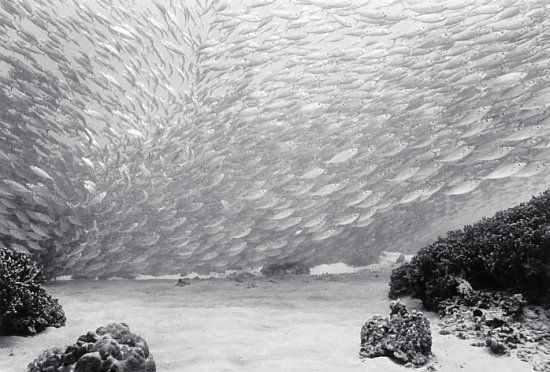|
|
Huge Shoals Of Fish
|
Diversity of fish
The term "fish" most precisely describes any non-tetrapod craniate (i.e. an animal with a skull and in most cases a backbone) that has gills throughout life and whose limbs, if any, are in the shape of fins. Unlike groupings such as birds or mammals, fish are not a single clade but a paraphyletic collection of taxa, including hagfishes, lampreys, sharks and rays, ray-finned fish, coelacanths, and lungfish. Indeed, lungfish and coelacanths are closer relatives of tetrapods (such as mammals, birds, amphibians, etc.) than of other fish such as ray-finned fish or sharks, so the last common ancestor of all fish is also an ancestor to tetrapods. As paraphyletic groups are no longer recognised in modern systematic biology, the use of the term "fish" as a biological group must be avoided.
Many types of aquatic animals commonly referred to as "fish" are not fish in the sense given above; examples include shellfish, cuttlefish, starfish, crayfish and jellyfish. In earlier times, even biologists did not make a distinction – sixteenth century natural historians classified also seals, whales, amphibians, crocodiles, even hippopotamuses, as well as a host of aquatic invertebrates, as fish. However, according the definition above, all mammals, including cetaceans like whales and dolphins, are not fish. In some contexts, especially in aquaculture, the true fish are referred to as finfish (or fin fish) to distinguish them from these other animals.
A typical fish is ectothermic, has a streamlined body for rapid swimming, extracts oxygen from water using gills or uses an accessory breathing organ to breathe atmospheric oxygen, has two sets of paired fins, usually one or two (rarely three) dorsal fins, an anal fin, and a tail fin, has jaws, has skin that is usually covered with scales, and lays eggs.
|
|









